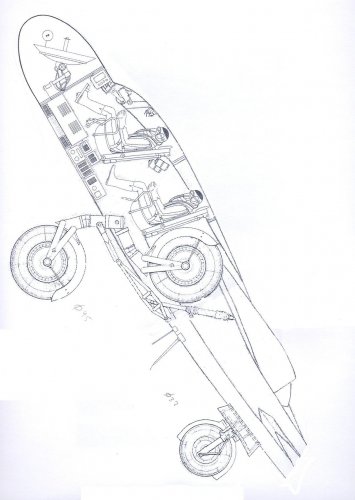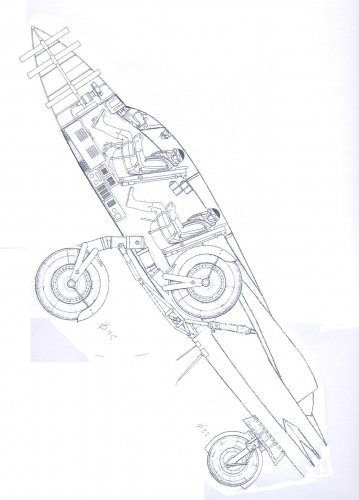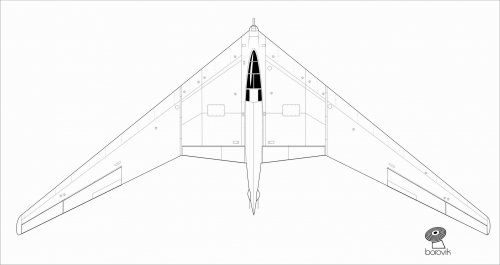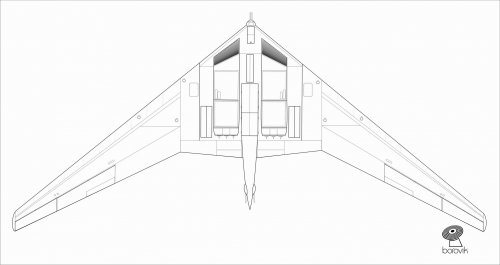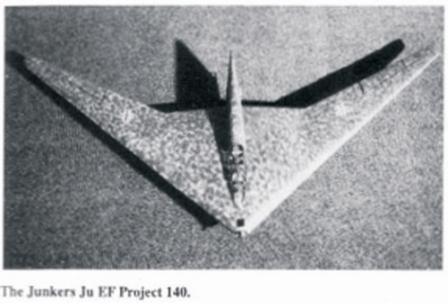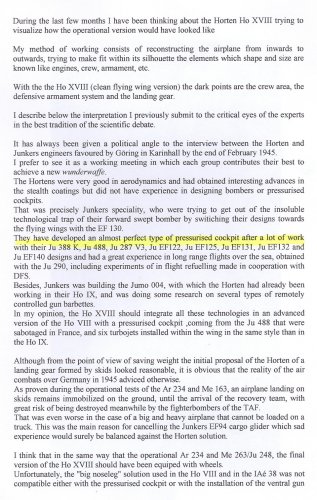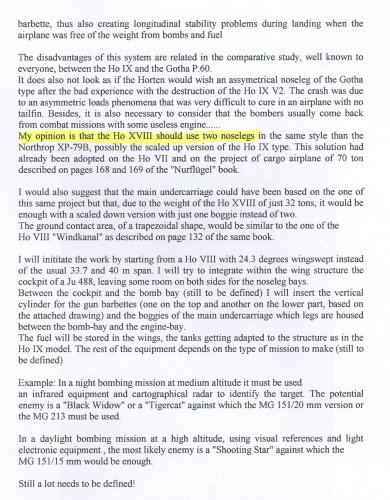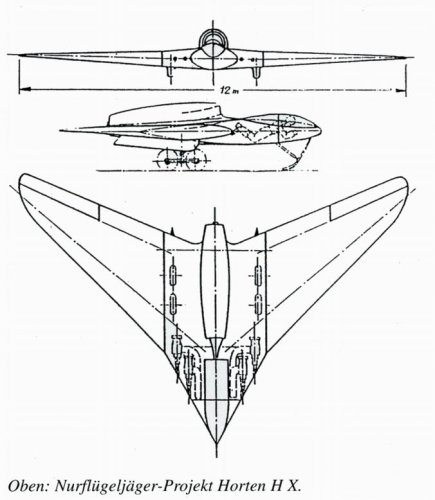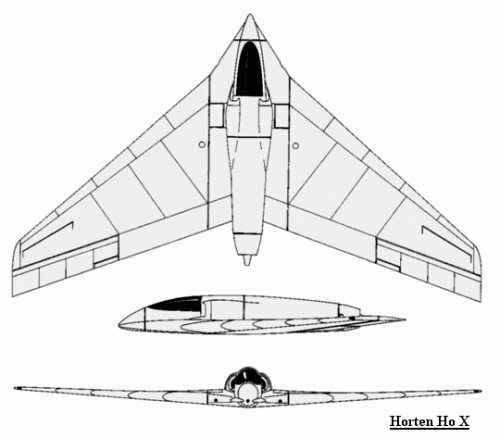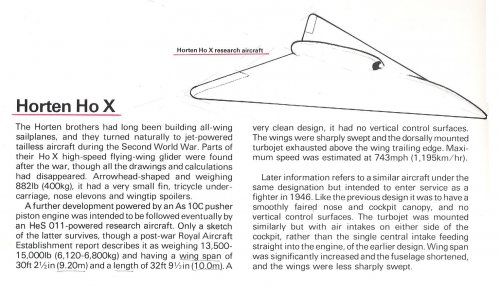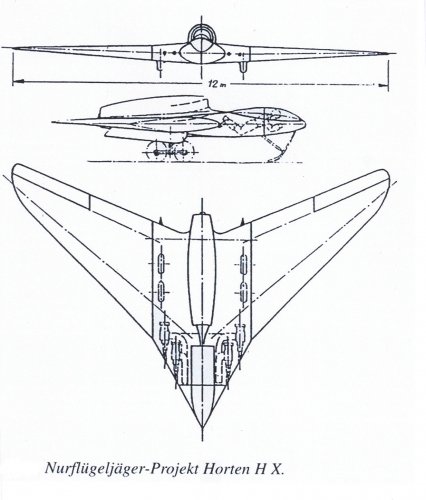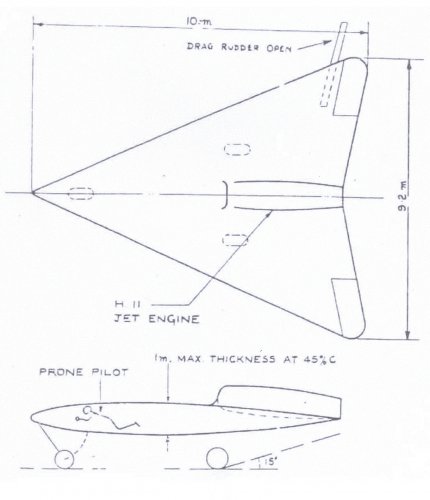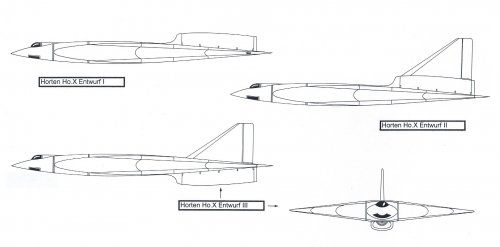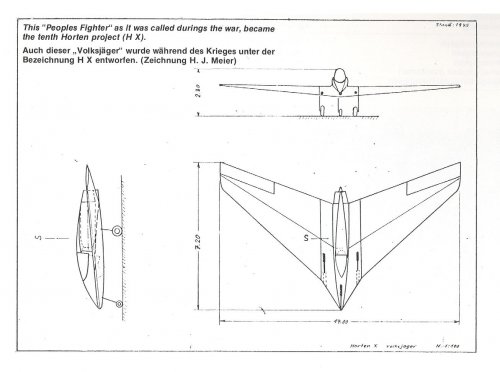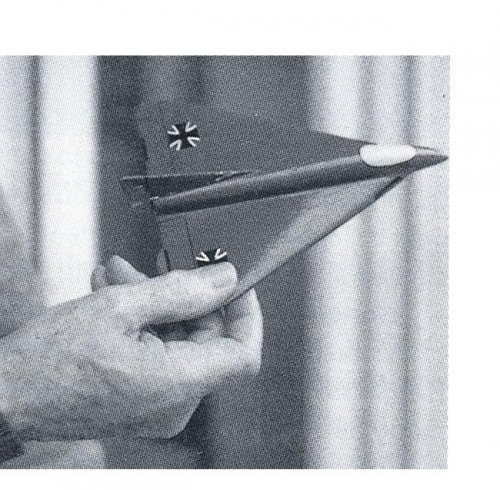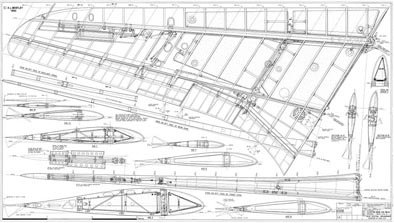You are using an out of date browser. It may not display this or other websites correctly.
You should upgrade or use an alternative browser.
You should upgrade or use an alternative browser.
Horten Jet Aircraft Projects
- Thread starter Justo Miranda
- Start date
zerstorer1946
ACCESS: Confidential
- Joined
- 27 January 2009
- Messages
- 58
- Reaction score
- 5
Justo your drawings are awesome!  ;D
;D
agricola64
ACCESS: Confidential
- Joined
- 11 July 2006
- Messages
- 85
- Reaction score
- 8
can anyone explain the logic behing this humungous nosewheel?
especially as rubber was a scarce material in ww2 germany
especially as rubber was a scarce material in ww2 germany
- Joined
- 11 March 2006
- Messages
- 8,608
- Reaction score
- 3,061
Wheelsize is a function of the weight carried by this wheel. In the case
of the Ho/Go 229 it was the nose wheel, which carried the larges part of
the aircrafts weight, contrary to most other nose wheel aircraft. I think,
its more a centerwheel landing gear, á la Lockheed U2, than a conventional
nose wheel landing gear.
of the Ho/Go 229 it was the nose wheel, which carried the larges part of
the aircrafts weight, contrary to most other nose wheel aircraft. I think,
its more a centerwheel landing gear, á la Lockheed U2, than a conventional
nose wheel landing gear.
It may be outside the main theme (not the night fighter)))Johnbr said:Do you have any on the HO 18.
It is still in the process, while only 2 views
Attachments
Excellent stuff !
zerstorer1946
ACCESS: Confidential
- Joined
- 27 January 2009
- Messages
- 58
- Reaction score
- 5
wow ;D
agricola64
ACCESS: Confidential
- Joined
- 11 July 2006
- Messages
- 85
- Reaction score
- 8
Jemiba said:Wheelsize is a function of the weight carried by this wheel. In the case
of the Ho/Go 229 it was the nose wheel, which carried the larges part of
the aircrafts weight, contrary to most other nose wheel aircraft. I think,
its more a centerwheel landing gear, á la Lockheed U2, than a conventional
nose wheel landing gear.
yes .. but having two smaller wheels side by side instead of that single large one would possibly free up lots of valuable space - like for fuel or avionics ..
Pelzig
ACCESS: Secret
- Joined
- 23 October 2008
- Messages
- 448
- Reaction score
- 65
What is simpler to produce and maintain? I'd wager a single wheeled design is. It might also consume the same, if not more rubber since you've doubled the number of tyres in order to carry the weight as Jemiba suggested. I'd figure a dual-wheeled arrangement had been considered but a single wheel design simplified production, eased maintenance, and used less materials and this is what was selected. ;D
agricola64 said:yes .. but having two smaller wheels side by side instead of that single large one would possibly free up lots of valuable space - like for fuel or avionics ..
Retrofit
ACCESS: Top Secret
- Joined
- 21 February 2007
- Messages
- 642
- Reaction score
- 272
borovik said:It may be outside the main theme (not the night fighter)))Johnbr said:Do you have any on the HO 18.
It is still in the process, while only 2 views
Strange, in David Myhra's book "The Horten Brothers and their all-wing aircraft", 1998, this project is labelled Junkers EF140, a counter-proposal made by a Junkers-led team to the original Horten XVIII proposal.
In other hand, the EF140 designation was also assigned to a post-war FSW bomber prototype built in Soviet Union by OKB Baade.
http://www.secretprojects.co.uk/forum/index.php/topic,4168.msg33194/highlight,ef-140.html#msg33194
Attachments
Johnbr said:Do you have any on the HO 18.
Plese see attached text
Attachments
It was intended as additional cushioning so that the HoIX could be flown from substandard, muddy runwaysagricola64 said:can anyone explain the logic behing this humungous nosewheel?
especially as rubber was a scarce material in ww2 germany
------------------------------------------------------------------------------------------------------------------------------------------------------------------------------------------------------------------
Apparently, this was a common design feature for postwar Soviet aircraft - if my distant memory seves me well... but don't quote me on that; it's heresay :-\
blohmundvoss
ACCESS: Restricted
- Joined
- 9 February 2009
- Messages
- 6
- Reaction score
- 1
The humungous wheel was actually a salvaged tailwheel from a Heinkel 177 bomber
- Joined
- 11 March 2006
- Messages
- 8,608
- Reaction score
- 3,061
The Ho/Go 229 was designed with a wheel of that size and using a tail wheel
of the He 177 probably would have brought savings in development time and
so eased later series production. There were other cases, too, I think, where
parts from one aircraft were used for another.
The Ju 287 prototype with its Liberator wheels was another story. They just were
the fastest way to get this "concept demonstrator" airborne, but surely wouldn't
have been used in later variants.
of the He 177 probably would have brought savings in development time and
so eased later series production. There were other cases, too, I think, where
parts from one aircraft were used for another.
The Ju 287 prototype with its Liberator wheels was another story. They just were
the fastest way to get this "concept demonstrator" airborne, but surely wouldn't
have been used in later variants.
Yaaay! for serendipity 
---------------------------------------------------------------------------------------------------
Mind you, i need post no references to state that the Allies had bombed Luftwaffe airfields silly towards the end of the war; a fact not lost on the RLM - and likely to be factored into initial design spec.s from the outset. At the risk of straying off-topic: damaged airfields were a major impetus to postwar development of VSTOL technologies [eg. the Ryan XP-13 Tailsitter and, ultimately, the Harrier]. Serendipity (due to material shortages and the like) aside, this does not exclude the hypothesis that aircraft such as the Go 229/Ho IX...and others like the Ba 349 Natter... were designed to operate from damaged airfields from the outset.
Regards
---------------------------------------------------------------------------------------------------
Mind you, i need post no references to state that the Allies had bombed Luftwaffe airfields silly towards the end of the war; a fact not lost on the RLM - and likely to be factored into initial design spec.s from the outset. At the risk of straying off-topic: damaged airfields were a major impetus to postwar development of VSTOL technologies [eg. the Ryan XP-13 Tailsitter and, ultimately, the Harrier]. Serendipity (due to material shortages and the like) aside, this does not exclude the hypothesis that aircraft such as the Go 229/Ho IX...and others like the Ba 349 Natter... were designed to operate from damaged airfields from the outset.
Regards
Hi everybody
Horten Schnellbomber
http://www2s.biglobe.ne.jp/%7EFlyWing/FlyingWing_Horten.html
http://www2s.biglobe.ne.jp/~FlyWing/image/H_IXb_3view.gif
Horten X series ?
http://www.nurflugel.com/Nurflugel/Horten_Nurflugels/ho_x__xiii_b_/body_ho_x__xiii_b_.html
http://renax.club.fr/sharkit/HoEnt1/HoEnt1.htm
If you know more , please add !
Many greetings and Thanks in advance
Horten Schnellbomber
http://www2s.biglobe.ne.jp/%7EFlyWing/FlyingWing_Horten.html
http://www2s.biglobe.ne.jp/~FlyWing/image/H_IXb_3view.gif
Horten X series ?
http://www.nurflugel.com/Nurflugel/Horten_Nurflugels/ho_x__xiii_b_/body_ho_x__xiii_b_.html
http://renax.club.fr/sharkit/HoEnt1/HoEnt1.htm
If you know more , please add !
Many greetings and Thanks in advance
Hi everybody
More Horten X A very interesting plane !
Supersonic research airplane
http://www.twitt.org/Farnborough_06.html#top
http://www.twitt.org/FarnFig25.jpg
http://www.nurflugel.com/Nurflugel/Horten_Nurflugels/ho_x__xiii_b_/ho_x_2.jpg
A BIG THANKS goes to Justo for his great drawings here !
http://www.secretprojects.co.uk/forum/index.php/topic,3553.0.html
Are these the armed Horten X ?supersonic? "Fighters" ?
http://www.geocities.com/unicraftmodels/fut/futgerm/futgerm.htm
Here the Horten XIIIb
http://www2s.biglobe.ne.jp/%7EFlyWing/FlyingWing_Horten.html
http://www2s.biglobe.ne.jp/~FlyWing/image/H_XIIIb_3view.gif
Should the XIIIb have a "water cockpit" ?
Here the Horten X "VOLKSJÄGER"
http://www.nurflugel.com/Nurflugel/Horten_Nurflugels/ho_x__xiii_b_/ho_x.jpg
Many greetings
More Horten X A very interesting plane !
Supersonic research airplane
http://www.twitt.org/Farnborough_06.html#top
http://www.twitt.org/FarnFig25.jpg
http://www.nurflugel.com/Nurflugel/Horten_Nurflugels/ho_x__xiii_b_/ho_x_2.jpg
A BIG THANKS goes to Justo for his great drawings here !
http://www.secretprojects.co.uk/forum/index.php/topic,3553.0.html
Are these the armed Horten X ?supersonic? "Fighters" ?
http://www.geocities.com/unicraftmodels/fut/futgerm/futgerm.htm
Here the Horten XIIIb
http://www2s.biglobe.ne.jp/%7EFlyWing/FlyingWing_Horten.html
http://www2s.biglobe.ne.jp/~FlyWing/image/H_XIIIb_3view.gif
Should the XIIIb have a "water cockpit" ?
Here the Horten X "VOLKSJÄGER"
http://www.nurflugel.com/Nurflugel/Horten_Nurflugels/ho_x__xiii_b_/ho_x.jpg
Many greetings
Hi everybody
COOL ! Thanks a lot ! borovik
Here the Horten "KAMPFJÄGER"
http://renax.club.fr/sharkit/Kampfjag/Kampfjag.htm
Was there also a fighter version of the Horten X research plane ?(maybe with water cockpit ?)(supersonic ?)
http://www.secretprojects.co.uk/forum/index.php/topic,3553.0.html
Thanks a lot for help
COOL ! Thanks a lot ! borovik
Here the Horten "KAMPFJÄGER"
http://renax.club.fr/sharkit/Kampfjag/Kampfjag.htm
Was there also a fighter version of the Horten X research plane ?(maybe with water cockpit ?)(supersonic ?)
http://www.secretprojects.co.uk/forum/index.php/topic,3553.0.html
Thanks a lot for help
renax
ACCESS: Confidential
sharkit site changes his url,
now:
http://www.sharkit.com/sharkit/HoEnt1/HoEnt1.htm

and:
http://www.sharkit.com/sharkit/Kampfjag/Kampfjag.htm

now:
http://www.sharkit.com/sharkit/HoEnt1/HoEnt1.htm
and:
http://www.sharkit.com/sharkit/Kampfjag/Kampfjag.htm

Chicken kana
Pienoismallit.net Finish modelling forum.
renax
ACCESS: Confidential
It is:
http://www.nurflugel.com/Nurflugel/Horten_Nurflugels/ho_x__xiii_b_/ho_x.jpg
good looking...
http://www.nurflugel.com/Nurflugel/Horten_Nurflugels/ho_x__xiii_b_/ho_x.jpg
good looking...
Horten Ho.X drawings
-From
-German Jet Genesis by David Masters , Jane's 1982
-Paper Planes of the Third Reich-Toros-1946-1989
-Unknown source
-From
-German Jet Genesis by David Masters , Jane's 1982
-Paper Planes of the Third Reich-Toros-1946-1989
-Unknown source
Attachments
-Horten X "experimental supersonic" ...please see http://www.secretprojects.co.uk/forum/index.php/topic,3553.0/highlight,horten%20ho%20x.html
highly speculative :-\
ReccePhreak
ACCESS: Restricted
- Joined
- 11 November 2007
- Messages
- 24
- Reaction score
- 0
I did a search through all the different posts concerning Horten flying wings, and couldn't find any post to help me, which is why I am starting a new thread.
I am trying to find out the size & shape of the Luftwaffe's 1250 liter fuel tanks, which were supposed to go on the production version of the Horten 229 (and maybe other aircraft). Does anybody have any drawings or dimensions of these tanks? I want to put them on my model of the proposed photo-reconnaissance version.
Larry
I am trying to find out the size & shape of the Luftwaffe's 1250 liter fuel tanks, which were supposed to go on the production version of the Horten 229 (and maybe other aircraft). Does anybody have any drawings or dimensions of these tanks? I want to put them on my model of the proposed photo-reconnaissance version.
Larry
ReccePhreak
ACCESS: Restricted
- Joined
- 11 November 2007
- Messages
- 24
- Reaction score
- 0
I thought they were supposed to be droppable, underwing fuel tanks, for longer range.
I can't really make anything out on your small drawing, but thanks for posting it.
Larry
I can't really make anything out on your small drawing, but thanks for posting it.
Larry
Avimimus
ACCESS: Top Secret
- Joined
- 15 December 2007
- Messages
- 2,233
- Reaction score
- 499
I remember that Gibbage argued that the internal structure of the Go-229 had no provisions for the ETC-500 racks (which means that the 3x1000 version was truly speculative pitch). This may apply to droptanks as well (as the wing tanks were quite expansive). I recall that Shick and Meyer also reported R4M provisions for the night fighter variant and I read somewhere else there was some pressure to add some type of vertical stabiliser after the crash (but I've never seen an illustrations on this).
ReccePhreak
ACCESS: Restricted
- Joined
- 11 November 2007
- Messages
- 24
- Reaction score
- 0
That is interesting information. The drawings show that bombs or drop tanks could be carried, but if the ETC-500 racks can't be installed, then that is not possible?!?Avimimus said:I remember that Gibbage argued that the internal structure of the Go-229 had no provisions for the ETC-500 racks (which means that the 3x1000 version was truly speculative pitch). This may apply to droptanks as well (as the wing tanks were quite expansive).
Since you (and others) say that the internal wing tanks were quite large, that may be the 1,250 liter fuel tanks that were mentioned, and I just assumed that they were larger drop tanks. I should've realized my stupid mistake, considering how large 900 liter drop tanks are, and how they wouldn't even fit under the Ho-229's wings. :-[
Cheers,
Larry
Johnbr
ACCESS: Top Secret
- Joined
- 6 May 2007
- Messages
- 752
- Reaction score
- 284
Here is a file that I have had for 30yr's.Hope you all like it.
http://www.ww2aircraft.net/forum/album/aircraft-cutaways/p20516-horten-ho-229.html
http://www.ww2aircraft.net/forum/album/aircraft-cutaways/p20516-horten-ho-229.html
ReccePhreak
ACCESS: Restricted
- Joined
- 11 November 2007
- Messages
- 24
- Reaction score
- 0
Johnbr said:Here is a file that I have had for 30yr's.Hope you all like it.
http://www.ww2aircraft.net/forum/album/aircraft-cutaways/p20516-horten-ho-229.html
Tried to download it, but got an error message that the file was damaged.
Larry
Similar threads
-
-
Stealth Warplanes of the Luftwaffe-Prototypes and Projects 1936-1946-War Secrets-Volume Four
- Started by Justo Miranda
- Replies: 2
-
-
-
W“Invisible” Aircraft (Stealth: The Early Years)
- Started by Wingknut
- Replies: 86

